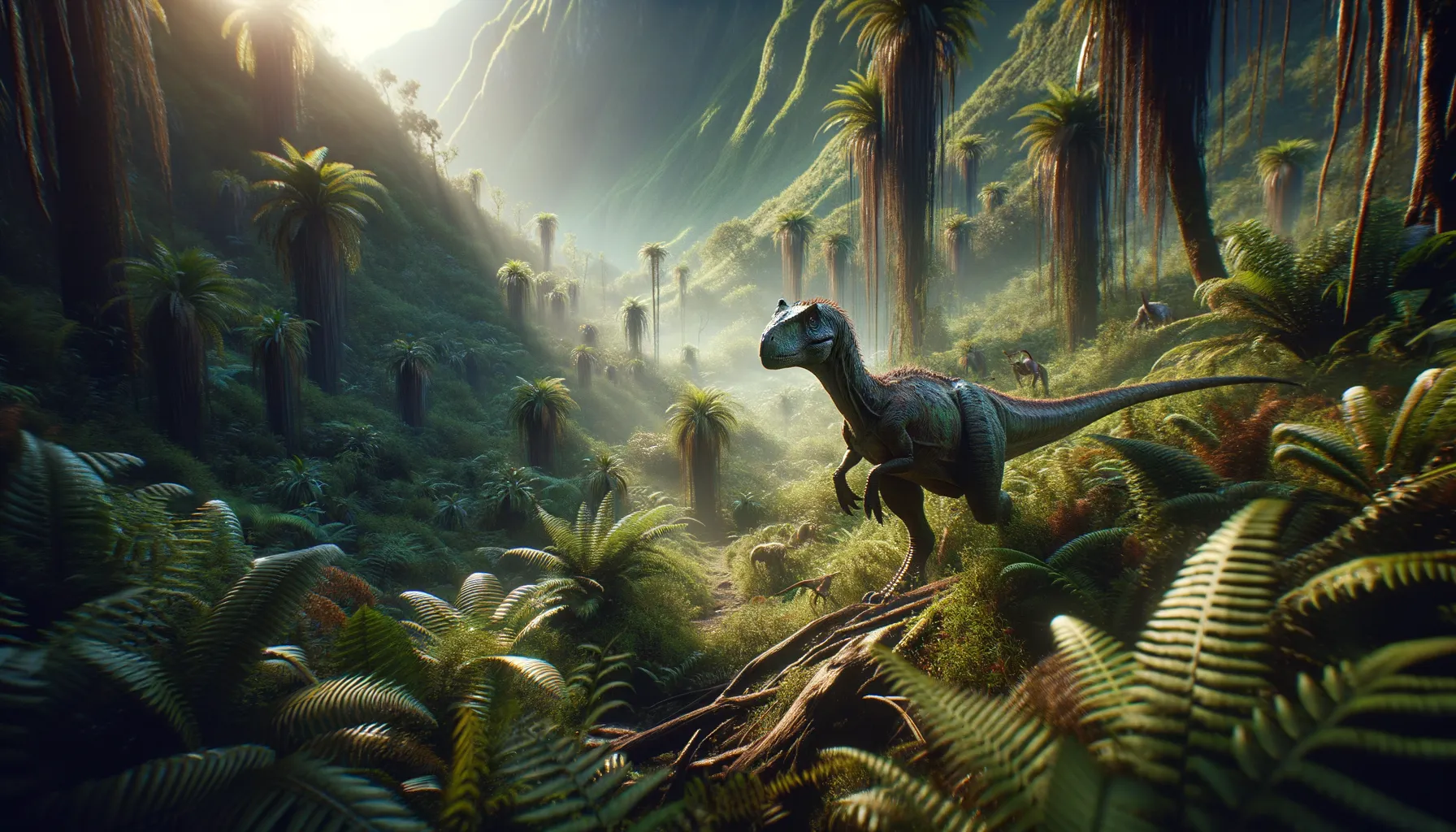
Lesothosaurus
Swift and nimble, an ancient herbivore's tale.
Period
Jurassic
Length
Approximately 2 meters long.
Height
Around 1 meter tall at the hip.
Weight
Approximately 10 kilograms.
Lesothosaurus was a small, bipedal dinosaur that roamed the Earth during the Early Jurassic period. Known for its agile build and herbivorous diet, it was one of the earliest ornithischian dinosaurs. Its small size made it nimble, allowing it to nimbly navigate its environment in search of plants to eat. The discovery of Lesothosaurus provided valuable insights into the early evolution of plant-eating dinosaurs.
Diet
Lesothosaurus primarily fed on vegetation, consisting of ferns and other low-growing plants. Its small, beak-like mouth helped it to pluck and chew its leafy meals efficiently.
Hunting
As a herbivore, Lesothosaurus did not hunt other animals. However, it had to remain vigilant and agile to evade predators that would consider it prey.
Environmental challenges
Living in the early Jurassic, Lesothosaurus faced challenges such as fluctuations in climate and vegetation availability. The presence of larger predators required constant awareness and quick reflexes to escape. Its environment also posed natural obstacles, including rivers and rocky terrains that it had to navigate carefully to find food and water.
Speed
Likely swift for its size, enabling quick escapes.
Lifespan
Estimated at around 10 to 20 years based on size.
First discovery
Discovered in the early 1970s in southern Africa.
Fun Facts
- Lesothosaurus was one of the smallest dinosaurs, about the size of a chicken.
- It lived during the Early Jurassic period, around 200 million years ago.
- Lesothosaurus was a herbivore, meaning it primarily ate plants.
- Fossils of this dinosaur were first discovered in Lesotho, a country in Southern Africa, which is how it got its name.
- Despite its small size, Lesothosaurus had a beak-like mouth, ideal for nibbling on tough vegetation.
- Its lightweight body and long legs suggest it was a fast and agile runner.
- Lesothosaurus is one of the earliest known ornithischian dinosaurs, a group that eventually led to species like Triceratops and Stegosaurus.
Growth and Development
Lesothosaurus started life as a small hatchling, growing rapidly to reach maturity. This quick growth was necessary to reduce vulnerability to predators. As it developed, its limbs adapted to support swift bipedal movement essential for survival.
Habitat
Lesothosaurus lived in open areas with access to ample plants for grazing. It likely preferred regions that offered a variety of vegetation and minimal dense forestation, allowing it to utilize its agility. Seasonal changes might have influenced its migration patterns within these semi-arid environments.
Interaction with other species
Lesothosaurus coexisted with other herbivorous dinosaurs, likely forming loose associations for increased protection. It may have also encountered early theropods, which posed threats. Group behavior may have been a deterrent against such threats, balancing competition and cooperation.
Natural lifespan
Its natural lifespan likely ranged between 10 to 20 years.
Reproduction
Lesothosaurus likely laid eggs, with nests possibly in concealed or protected areas. These nests comprised multiple eggs, and hatchlings were likely self-sufficient shortly after birth, due to the lack of parental care observed in similar species.
Social behaviour
Lesothosaurus probably exhibited social behaviors common among herbivorous dinosaurs. While largely solitary in foraging, it might have formed loose groups for protection. These groupings helped reduce individual risk from predators while sharing information about feeding locales.
Fossil locations
The first Lesothosaurus fossils were found in Lesotho, Southern Africa, providing critical data on its habitat and lifestyle. Additional discoveries across southern Africa have helped paint a broader picture of its range during the Jurassic period.
